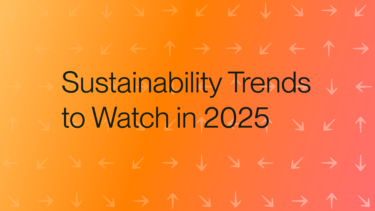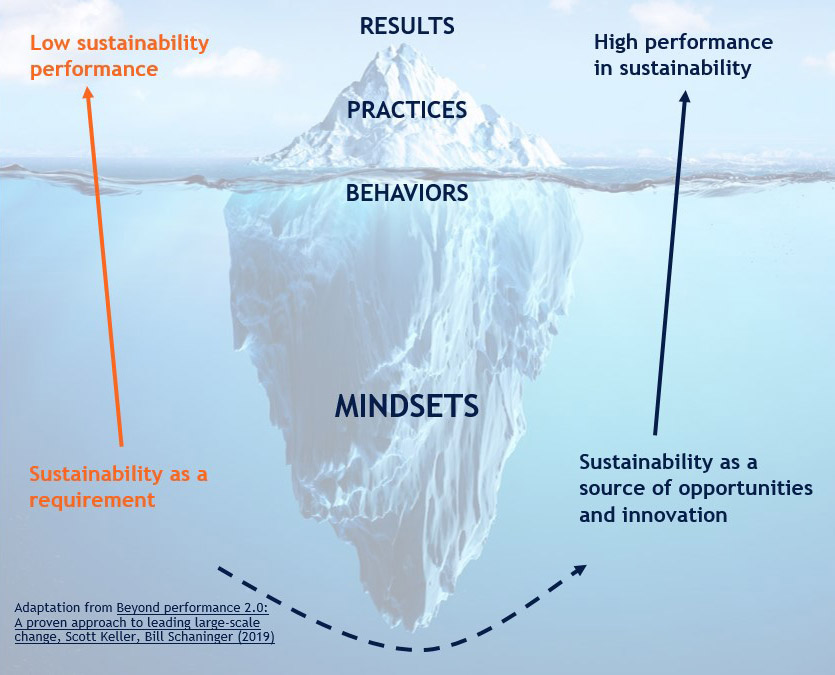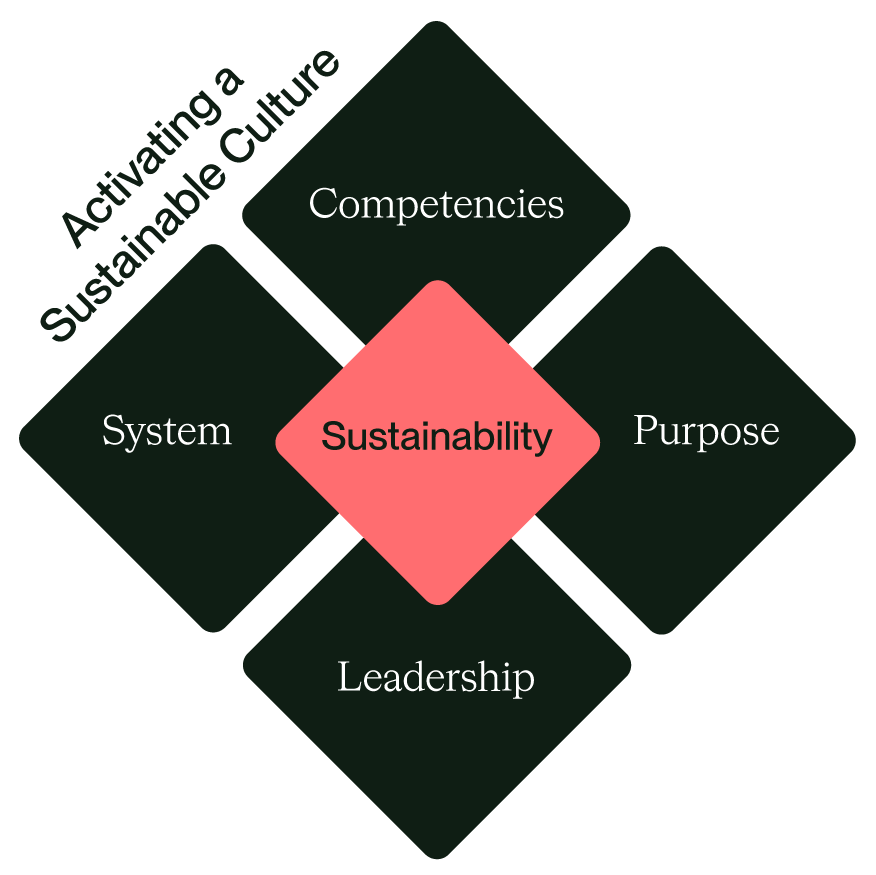
Contents
- Person-centred sustainable transformation
- Strengthening the purpose
- Connection with the system and daily processes
- Skill building
- Contact us
Share this article
The biggest challenge facing organisations today is successfully completing their transformation process to become truly sustainable. While the objectives and goals are clear, faster solutions are required to make change real and effective. The time has come to move from ambition to action, a leap that is difficult yet viable if the right tools are strengthened.
Though necessary, change is always a challenge and does not occur overnight, particularly in organisations. According to numerous studies[1], only 1/3 of all change initiatives succeed, the main causes of the failure of which include:
- Lack of support from leaders.
- Limited understanding of the change and its impact.
- Lack of involvement of employees in the process.
- Poor or inefficient communication.
- Resistance to a culture shift in the organisation.
As you can see, most of the causes are related to people. Because, ultimately, it is not organisations that change, but people.
Many organisations develop sustainability strategies, decarbonisation plans, more efficient processes… But most forget to place people at the centre of the equation. A successful sustainability transformation requires a new mindset. As Einstein once said, “We cannot solve our problems with the same thinking we used when we created them.”
It is not enough to approach sustainability as if we were just “ticking a box”, or as just another requirement or compliance issue. Each member of the organisation must view sustainability as a source of growth and innovation, as an opportunity to create value. Only with this mindset is it possible to effect real change that drives sustainable performance.

Organisations that are willing to lead this change in mentality will be strengthened and develop the necessary resilience to evolve and meet future sustainability challenges.
Person-centred sustainable transformation
Promoting a new perspective requires effort. It is not enough to simply share a PDF or organise an initiative for World Environment Day.
Success demands contributions from all stakeholders, both internal (technical teams, senior management, staff…) and external (suppliers, investors, customers…), to address the challenge in a holistic manner. This is the only way to meet sustainability strategy targets and achieve results in the short and long term.
At Anthesis, we base our work on the principles of Scott Keller and Bill Schaninger’s influence model to identify the 4 fundamental pillars that catalyse this person-centred sustainable transformation
Strengthening the purpose
All organisations must share their vision clearly and let all people know exactly what is expected of them. The goal is to form a team that understands, shares and is enthusiastic about the change. Developing an attractive narrative and actions that connect stakeholders and place them at the centre will help create value and strengthen the collective purpose.

Connection with the system and daily processes
To be effective, the change must be linked to processes, mechanisms and measuring systems that enable the change to be enacted and its progress to be monitored. A good sustainable transformation strategy must take into account the reality of each person and reinforce this new mindset with formal mechanisms that encourage and support the change.
Promotion of cross-cutting leadership
In our minds, we often equate the word leadership with senior management and high positions, and while these individuals do play a vital role, leadership must be understood as a cross-cutting element that permeates the entire organisation. There is no point in having a senior management who is committed to sustainability if this mentality is not shared by all teams (from purchasing, to innovation, operations, production…).
This change in mindset must have that social component that helps people perceive and share attitudes and behaviour. To this end, it is important to promote a form of leadership that empowers agents of change throughout the organisation, as a collective network that firmly believes in the opportunity sustainability presents, and is a driving force for change and innovation.
To this end, it is beneficial to create spaces for dialogue that facilitate exchanges and conversation, as well as symbolic actions or specific learning which help people manage change and consolidate a sustainable mentality across the entire organisation.
Skill building
This aspect is key to coping with change confidently and with assurance, combatting resistance and fear. We cannot ask our people to work in a new context without first providing them with sufficient learning. Organisations must develop the necessary skills to successfully handle change and adopt a culture of continuous learning that enables them to innovate and adapt to future sustainability requirements. These skills will not be the same for all teams and profiles, and it will be necessary to prioritise and adapt learning programmes (from the most basic to the most advanced) to translate the organisation’s commitments into actions.
[1] Martin E Smith “Success rates for different types of organizational change” Performance Improvement 41, nº1 (2002).
We are the world’s leading purpose driven, digitally enabled, science-based activator. And always welcome inquiries and partnerships to drive positive change together.




